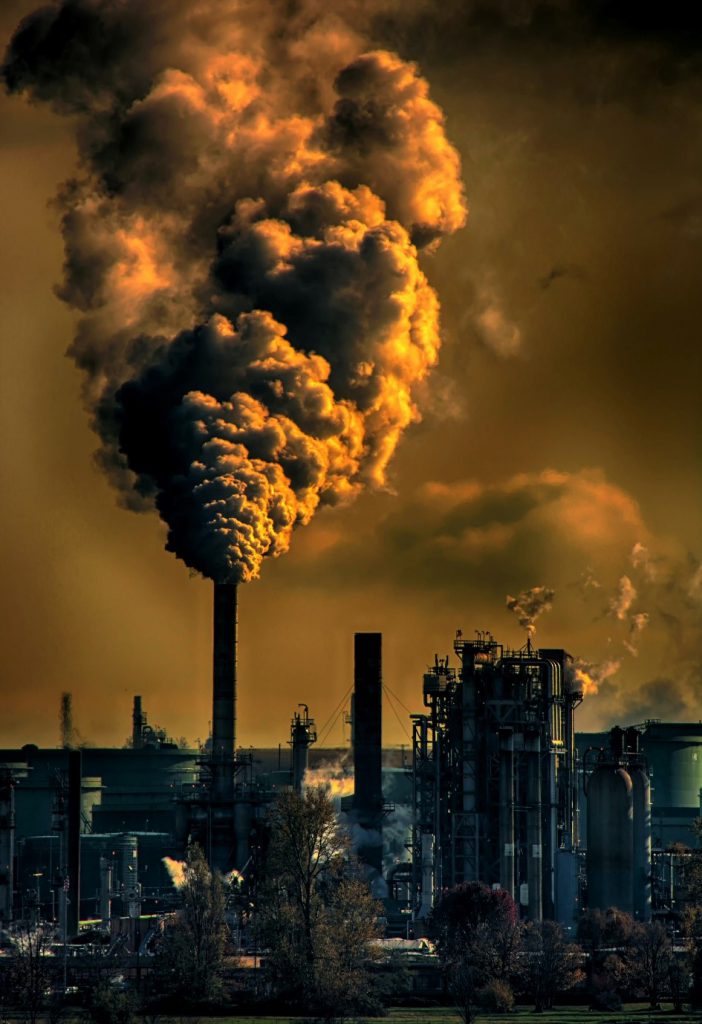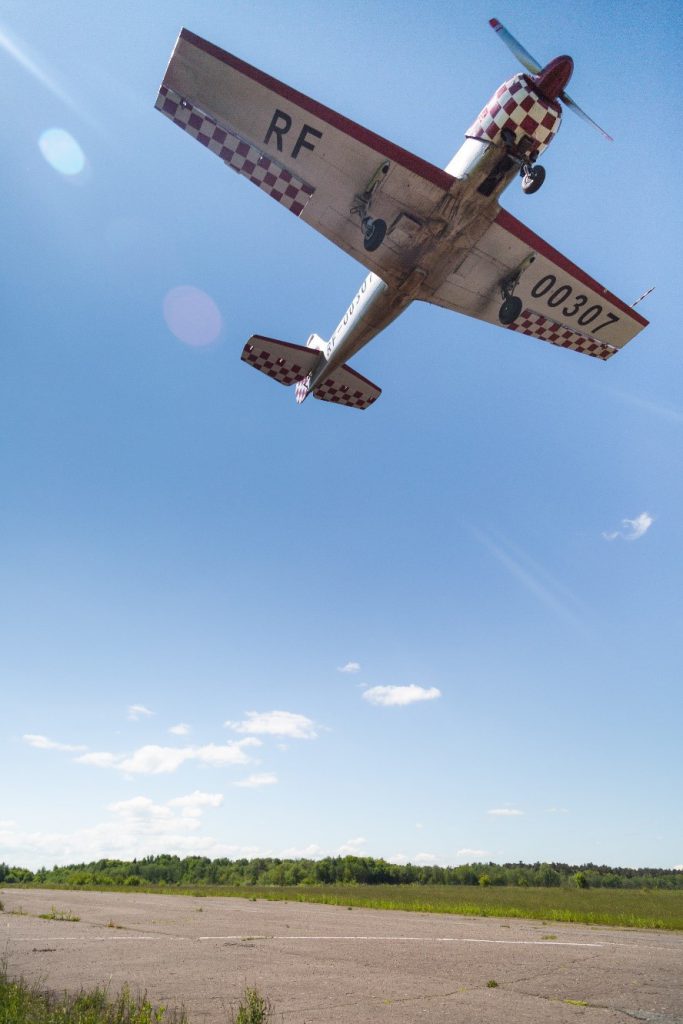
Animals and plants that are critical for maintaining our ecosystem are either critically endangered or under threat of extinction, all because of human-caused global warming and habitat loss.
We are also experiencing a sharp rise in global temperatures, which is causing a loss of sea ice, higher sea levels, and longer and more intense heatwaves. These changes in the climate are not only permanent and irreversible but will continue to worsen for decades to come, affecting not only our quality of life but also future generations.
If you are running a small or medium business and operate in the aviation industry, then you perhaps are aware of climate change and rising global temperatures. After all, you are a small, but important part of a huge industry (little drops make the mighty ocean, we all know about it). However, most businesses are unaware that climate change works both ways. According to the ICAO factsheet, climate change will have persistent and long-term effects on the aerospace industry. As the sea levels and global temperatures rise, the volatility of weather will increase, which will impact all aspects of operational performance.
With so much on the line, it is time we take a step towards becoming more environmentally conscious. But before we can take the step towards becoming an eco-friendly organisation, we must first understand how the aerospace and aviation industry actually impacts climate change.

What Is Climate Change?
Climate change is a long-term shift and change in global temperature and weather patterns. While these shifts are natural and happen over particularly long periods, humans have been the driving force of climate change since the 1800s. In fact, the earth is 1.1 °C warmer than it was in the 1800s. Most people think that climate change just refers to warmer temperatures, but we are all part of an ecosystem. This means that warmer temperatures don’t just impact the weather but also cause water scarcity, intense droughts, raging wildfires, melting polar ice caps, flooding, declining biodiversity, catastrophic storms, and other natural disasters.
People worldwide are experiencing climate change in different ways, impacting our health, housing, safety, work, and our ability to grow food. People who live in smaller communities are particularly more vulnerable to climate change, and due to saltwater intrusion and rising sea levels, whole communities have had to relocate. The number and duration of droughts are increasing, also forcing people to relocate to other regions; all this is said to increase the number of “climate refugees” in the near future.
According to a 2018 UN report, scientists have stated that to maintain a habitable environment and limit the worst climate impacts; we must limit the rise in temperature to 1.5 °C. Yet, it is predicted that global temperatures will rise to 2.7°C by the end of the century. This means that according to current reports, by the end of the century, humans won’t have a habitable earth environment to live in.

Cause of Climate Change
The earth has gone through many heating and cooling periods since the big bang. Things like volcanic eruptions, rise and fall, or naturally occurring greenhouse gases and the sun’s intensity are all contributing factors in climate change, but usually, these temperature changes are extremely slow and often take hundreds of thousands of years. Human intervention has significantly sped up climate warming. Let’s look at some of the major factors of global warming.
CO2 Emissions
CO2, or carbon dioxide, is released through natural processes such as volcanic eruption and breathing. Still, factors such as deforestation, burning fossil fuels, and changes in land use have all contributed to climate change. Since the industrial revolution, humans have increased the atmospheric concentration of CO2 by almost 48%.
Human activities currently produce 30 billion tons of CO2 into the atmosphere, which has increased from 280 ppm in pre-industrial times to 414 ppm in 2020. This tells us how many parts of carbon dioxide are in one million parts of air (parts per million).

Methane
Methane is also a naturally produced gas that is released by decomposition, cultivation, and by livestock. Cattle are the number one source of greenhouse gases, producing 220 tons of methane each year. Methane produced by cattle is rather short-lived, particularly when compared to CO2, but they are 28 times more potent.
Nitrous Oxide
This is a powerful greenhouse gas that is produced due to soil cultivation, burning of fossil fuels, biomass burning, and creating nitric acid. The concentration of nitric oxide has risen about 20% since the pre-industrial times, changing from 270 ppb to 332 ppb (parts per billion).
Reflection or Absorption Of Sun Rays
We lose almost 13% of Arctic ice each decade, but over the last 30 years, the thickest ice in the artic has declined by a whopping 95%. The Arctic and Antarctic are covered in ice, and they serve to balance the hotter areas of our earth by reflecting the sun’s rays back into the atmosphere. If the Arctic has less ice, it will reflect fewer sun rays, which will cause more intense heat waves worldwide. As the permafrost melts, it releases methane which causes even more melting. Melting ice caps also increases seal levels, increasing the chances of coastal flooding.
Role Of Aerospace And Aviation
While only 2.5% of global CO2 emissions and 12% of CO2 emissions produced by transport are caused by aviation, the overall contribution to climate change is much higher since it affects the climate in a number of different ways. Aside from emitting CO2, aircraft also emit a number of other pollutants in the atmosphere such as methane, ozone, water vapour, soot, sulphur, aerosol, and water contrails.
In 2013, CO2 produced from commercial aviation was about 710 million tons. By 2017, CO2 emissions reached 860 million tons and further climbed to 905 million in 2018. Climate change caused by commercial aviation is pretty complex and spans altitudes, oceans and continents.
CO2 is the largest component of emissions and accounts for almost 70% of all emissions. Every kilogram of jet fuel produces 3.16 kilograms of CO2, 30% of which is naturally removed from the atmosphere over the next 30 years. An additional 50% CO2 naturally disappears in a hundred years, while the remaining 30% can stay trapped in the atmosphere for thousands of years to come.
Water vapours account for almost 30% of the emissions produced by aircraft, and while they aren’t directly related to global warming, they cause something called contrails which do have a direct link to global warming. Contrails, or cirrus clouds, trap infrared rays in the atmosphere, producing a warming reaction that is almost 3 times as potent as CO2. The effect of this is so large that it exceeds the total warming influence of all aircraft since the beginning of flight.
Various chemicals are also used by aircraft and airport operators, and these chemicals can leach into local water sources through rainwater, causing water pollution. To service and maintain aircraft, environmentally harmful materials like paints, cleaning fluids, and oil are used. Once these substances are used, they need to be appropriately recycled to not end up in rivers, oceans, or landfills. Airports, aircrafts, aircraft manufacturers and aircraft component manufacturers produce large quantities of waste, and disposal is becoming an increasingly bigger problem. The cost of installing and maintaining an appropriate disposal system is rising, and waste streams are becoming victims of inefficient processing.

How Can We Improve Our Current Situation?
We already see significant changes in fuel and CO2 consumption; in fact, a single fight produces 50% less CO2 as compared to 1990. This significant change is all due to sustainable fuels, technological advancements, and improvement in infrastructure and operations. However, the overall emissions generated by aerospace and aviation industry have significantly increased due to increasing air traffic. And if we want to create a sustainable and eco-friendly SME operating within those industries, there are plenty of things we need to change.
Circular Economy
Creating a circular economy model comes with a lot of challenges and problems, starting from the sourcing of materials all the way to food safety and onboard waste. The aerospace industry as a whole, currently functions on a linear economy that not only consumes an intense amount of energy but is also inherently wasteful. The linear model depends on natural resources and fluctuates with the rise and fall of material cost. The circular economy, however, aims to create an industry that promotes reusing, recycling, and reducing waste, lowering emissions caused by the extraction and production of raw materials.
While going green isn’t a new concept for the aviation and aerospace industry, it certainly is harder to move from a linear economy to a circular economy if you are part of the industry. If we recirculate products instead of discarding them, we retain products and material values better than the linear economy. By minimizing product demand, a circular economy also creates less waste, reducing the production of greenhouse gases. Read more about circular economy strategy called 9R here: https://eqmconsult.com/9r-strategy-for-a-company-to-become-more-sustainable-and-eco-friendlier/
Sustainable Fuels
Utilizing sustainable fuels could be the key to limiting and reducing greenhouse emissions, particularly CO2. Alternative fuels could reduce about 80% of CO2 emissions and since the first biofuel flight in 2008, there has been significant research in the field of alternative fuels. But as of now, without any strict standards and laws in place, the aerospace industry could destroy forests to make way for jet-fuel plantations.

Sustainable Sourcing
Another way to reduce environmental impact is by sourcing materials from companies that use eco-friendly and ethical practices to produce their products. You will need to check whether your supplier uses green methods during production and whether they use socially responsible and ethical methods to source their raw materials and produce components. Good waste disposal practices, limiting water waste, and waste production are all green practices that your supplier should be following. You also want to make sure that your supplier is complying with fairtrade practices, which includes sourcing materials and labour from other countries and paying their employees an adequate amount of wage. The sustainable sourcing concerns the location of a supplier, the mean of transport used (by air, by sea), as well and the length of a supply chain (how many tiers). The suppliers and sub-tier suppliers proximity is important to reduce emissions from transport.
Furthermore, you also want to make sure that their products are reusable, recyclable, or biodegradable materials since this will help you in creating a circular economy.

Green Manufacturing and Design
People all around the world are taking steps to create greener manufacturing, and these ambitious operations are often backed by millions of dollars of investment. Pratt & Whitney is an engine manufacturer and has not only taken steps to reduce the environmental impact their factories produce but also hopes to recycle 100% waste produced by their factories, consume 80% less water, and have little to no water waste. In aerospace and aviation industry also the weight of articles can have a big difference in global climate change, the lighter the better, as this will reduce carbon footprint during the flight.
Energy-Efficient Technology
Aviation is one of the most technologically advanced and innovative sectors, and they have made a lot of improvements in creating aircraft that are more fuel-efficient. But the majority of the planes still run on fossil fuels and are creating a lot of emissions. The industry may have a solution in the dorm of hybrid-electric aircraft, but the technology is still in development. In the meantime, we must use other energy and fuel-efficient ways to reduce our impact.
All sectors and companies have different impacts on the environment, whether it be big or small. But going green and trying to become a sustainable and eco-friendly SME can protect our climate and attract more customers, as companies have shifted to buying from eco-friendly and environmentally conscious providers. If you are interested about this topic, here is your further reading list:
- Environmental Aspects in the Aerospace Industry: How to Become Eco-friendly while Operationg in Aerospace?
- 9 Simple Steps to Making your Business more Sustainable and Eco-friendlier
- Environmental Management in the Company—Fashion or Necessity?
- Protecting the Planet with Standards— Different Types of Environmental Management Standards
If you find it hard to implement a robust environmental management system in your SME, you can always contact an external expert, who dscuss your case with you and help you create an eco-friendly organisation while ensuring that you adhere to ISO 14001 standard.
If you are looking for a consultant that is experienced in implementing sturdy environmental management systems, then check out the services offered by EQM Consult. We have years of experience in implementing ISO standards within the industry and we help businesses to create strong environmental management systems and quality management systems compliant to standards.
Check out our website for more information or contact us to discuss you case and see if we can help you.


Ph.D. Beata Paliwoda
Founder and Owner of EQM. Environmental and quality consultant and auditor. Professional career built in Quality Assurance departments in various companies from the automotive, aerospace, railway industries, as well as a management systems consultant. Successfully completed many complex projects related to the implementation of management systems, process improvements and business transformation. Auditor of ISO 9001, ISO 14001, AS 9100, project manager of APM, lecturer at the Poznan University of Business and Economics, researcher on the effectiveness of EMS and QMS in organisations.






